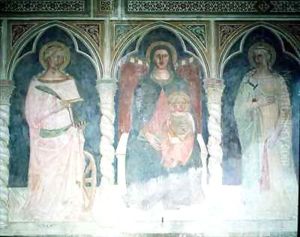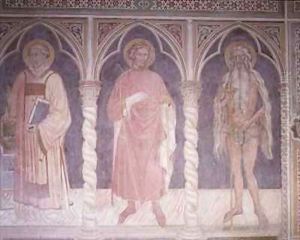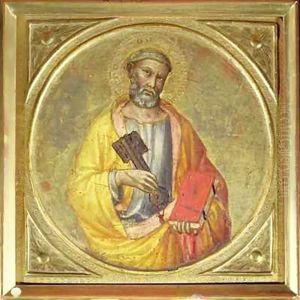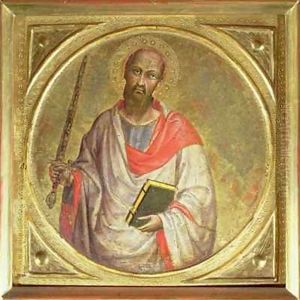Martino de Bartolomeo Paintings
Martino di Bartolomeo, also known as Martino di Bartolomeo di Biagio or simply Martino di Bartolomeo, was an Italian painter and manuscript illuminator active during the late Gothic period. Born in the late 14th century, around 1360 or 1370, in Siena, Italy, Martino was part of a period in Italian art history that bridged the medieval traditions with the early stirrings of the Renaissance. Although precise details about his early life and training are scarce, it is believed that he was influenced by the Sienese School, which was renowned for its emphasis on decorative style, elegance, and a preference for linear patterns and rich color.
Martino's career spanned the late 14th and early 15th centuries, a time when Siena was a vibrant center for arts rivaling Florence. He was deeply involved in the artistic life of Siena and worked on various commissions both within the city and in the surrounding regions. His works include frescoes, panel paintings, and illuminated manuscripts, showcasing his versatility across mediums. Notably, Martino's art is characterized by its devout religious themes, a hallmark of the period, with a particular emphasis on the life and passion of Christ, the Virgin Mary, and the saints.
Throughout his career, Martino de Bartolomeo was known for his ability to blend traditional Gothic elements with the emerging trends of the early Renaissance. His figures, while still retaining the elongated proportions and hierarchical scale typical of the Gothic style, began to show a greater sense of volume and a more naturalistic approach to drapery and poses. This stylistic evolution is evident in his frescoes in the Church of San Domenico in Siena and his panel paintings, which often featured intricate backgrounds and were executed with a meticulous attention to detail.
Despite his contributions to the development of Sienese art, Martino's work was somewhat overshadowed by more renowned contemporaries like Duccio di Buoninsegna and Simone Martini. However, his legacy is preserved in the surviving works that exemplify the richness of Sienese painting and its influence on the transition towards Renaissance ideals. Martino di Bartolomeo's death around 1435 marked the end of an era for the Sienese School, but his works continue to be studied and appreciated for their beauty and historical significance.



